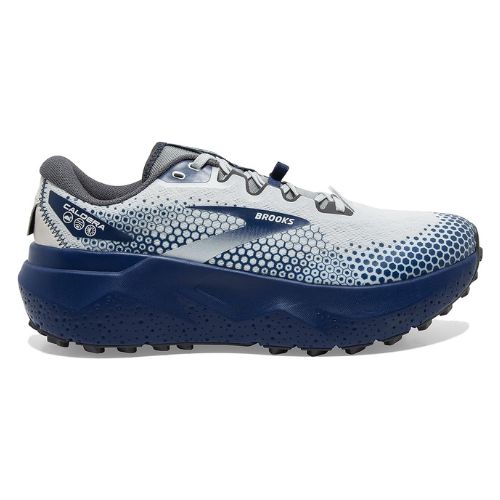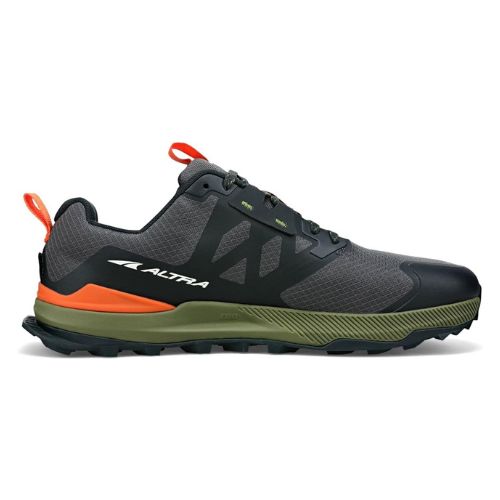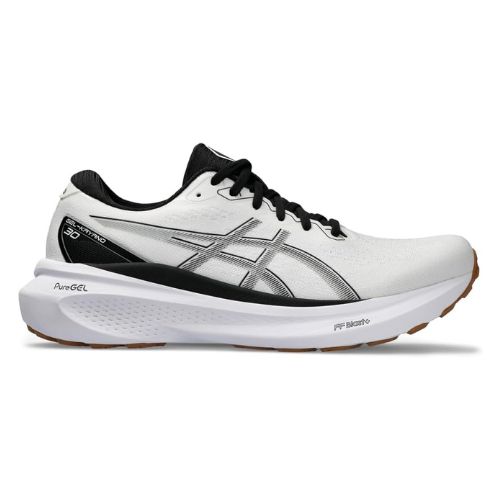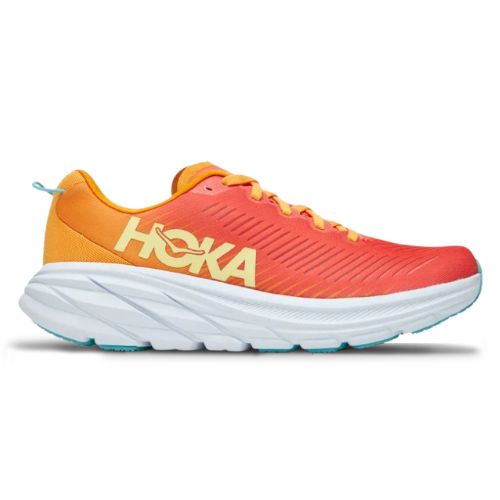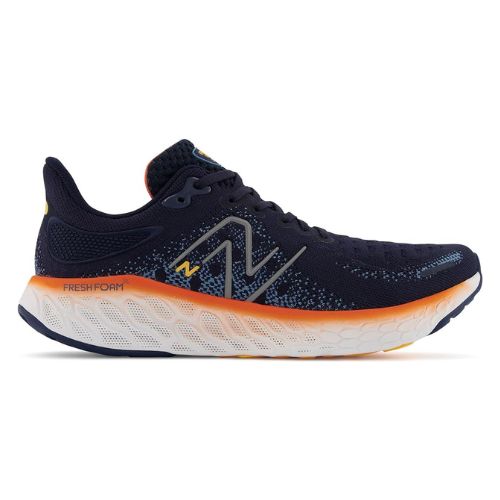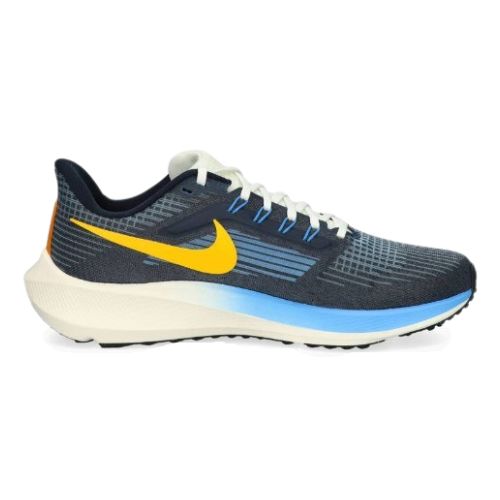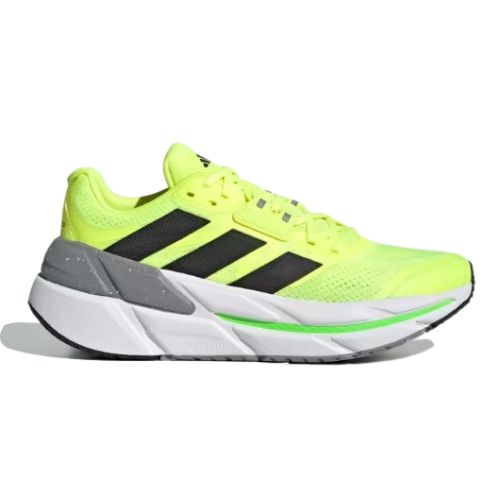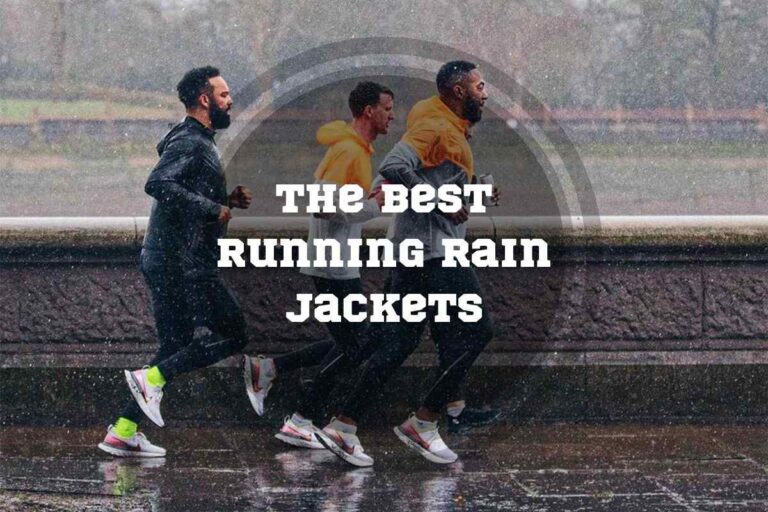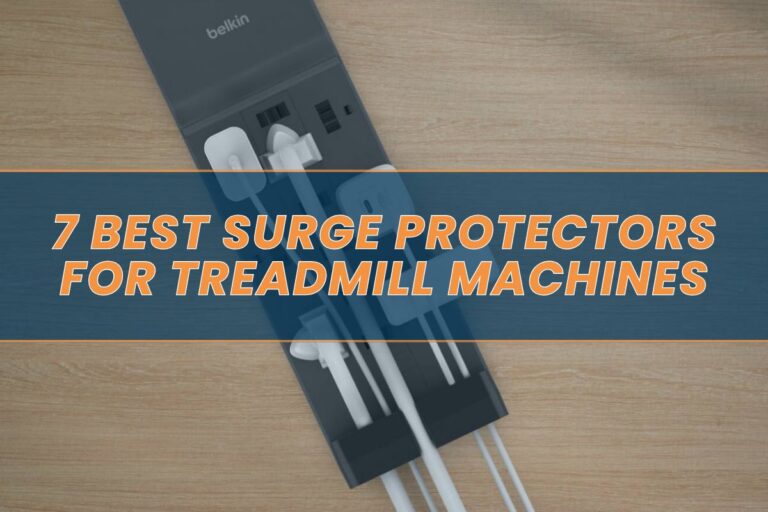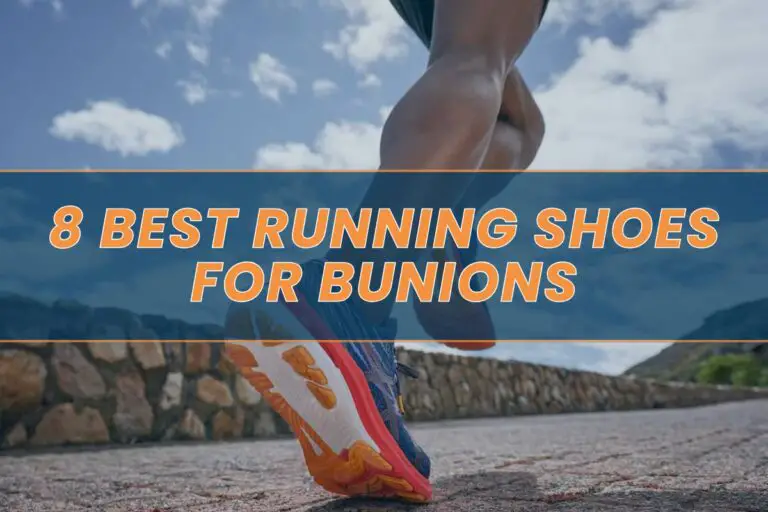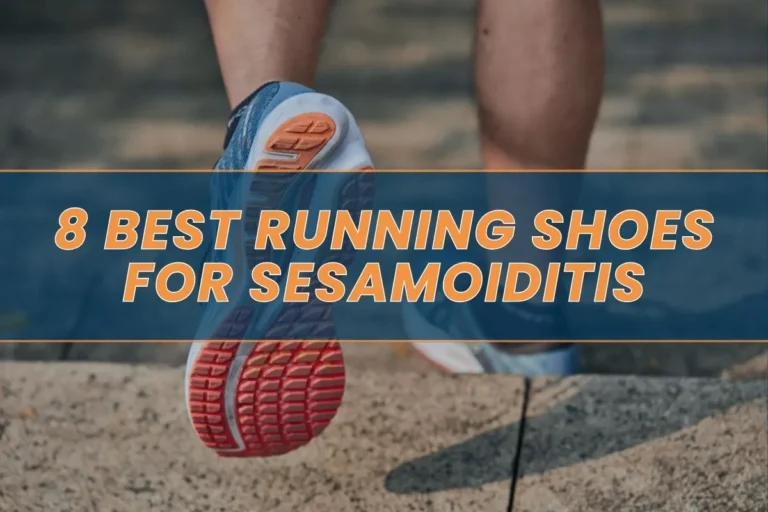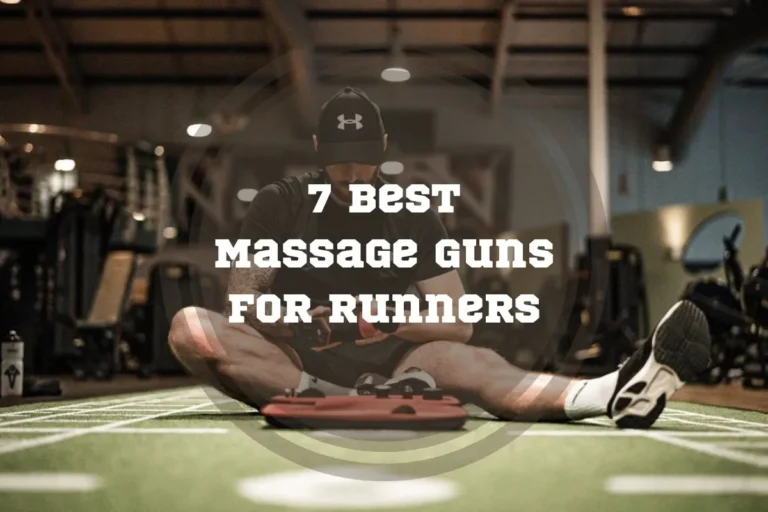8 Best Running Shoes for Forefoot Strikers in 2025
Are you looking for the best running shoes for forefoot strikers to give you maximum cushioning and stability? This article will provide a comprehensive list of top running shoes specifically designed for forefoot striking.
Get ready to take your game up a notch with the perfect pair of running shoes made just for forefoot strikers!
In a HURRY? Skip to Our Pick
The Brooks Men’s Caldera 6 is go-to choice for dedicated runners. Designed for comfort and performance, this shoe features advanced technology to support your forefoot, ensuring a smooth and responsive ride on your runs.
Toe strikes tend to generate greater impact forces on the forefeet compared with other footstrike patterns, so cushioning is important. Arch support is also key when selecting running shoes for toe runners, as it ensures stability and reduces the chance of injuries such as plantar fasciitis. Low- or zero-drop soles may help a runner achieve their desired pace more easily, while an ergonomic fit will provide better stability.
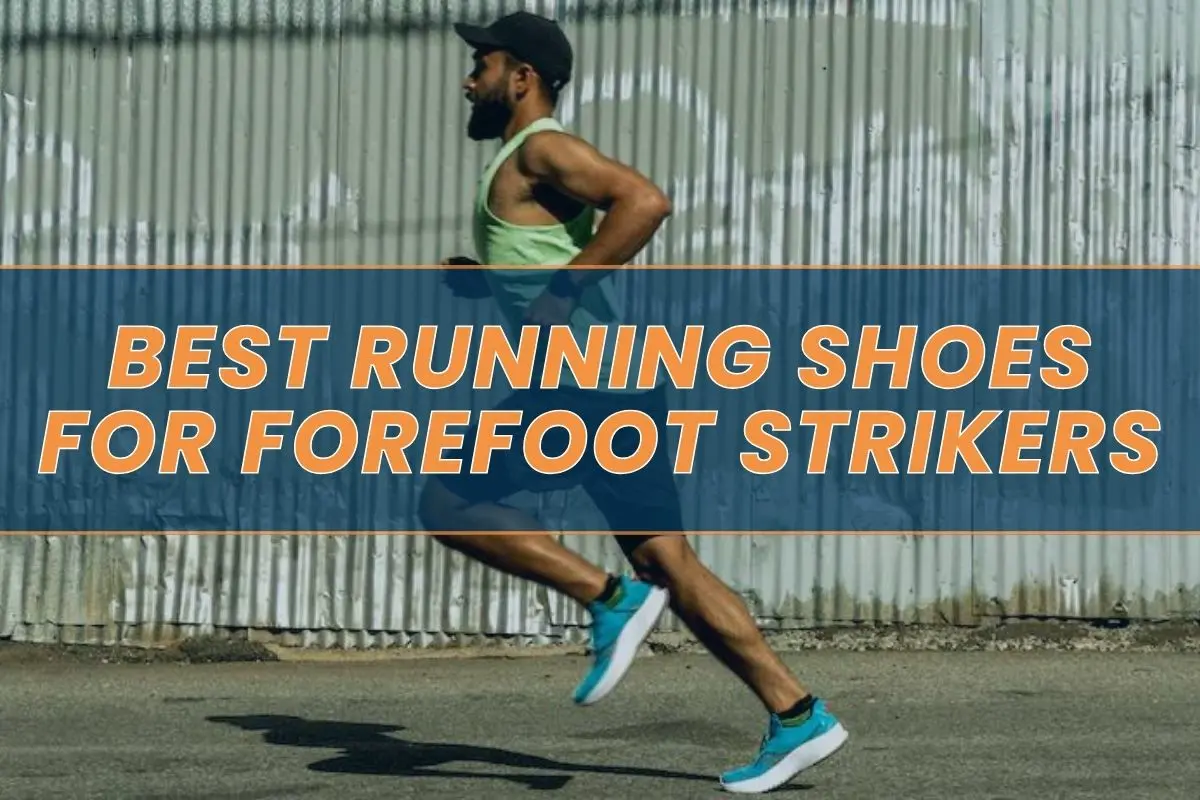
Top 8 Best Running Shoes for Forefoot Strikers Reviewed
- Brooks Men’s Caldera 6 Trail Running Shoe – Top Pick
- ALTRA Lone Peak 7 – Best for Trail Runs
- ASICS Men’s Gel-Kayano 30 Running Shoes – Premium Choice
- HOKA ONE ONE Rincon 3 Women’s Running Shoes – Best For Women
- New Balance Men’s Fresh Foam X 1080 V12 Running Shoe – The Best For Long Runs
- Saucony Men’s Kinvara 14 Sneaker – Budget Pick
- Nike Pegasus 40 Men’s Running Shoe – The Most Design Options
- Adidas Men’s Adistar Cs Running Shoe – Best For Easy Runs
Different shoe brands feature specialized technologies or designs for improved responsiveness and shock absorption across different surfaces.
From Brooks to Adidas, here are of the most suitable running forefoot shoes for those who favor toe strikes.
| Products | Expert score | Comfort and fit | Breathability | Material | Flexibility | Cushioning | Support and stability | Value for money |
|---|---|---|---|---|---|---|---|---|
| Brooks Caldera 6 | 4.9 | 5.0 | 4.9 | 5.0 | 5.0 | 4.9 | 5.0 | 5.0 |
| Altra Lone Peak 7 | 4.9 | 5.0 | 4.9 | 4.9 | 4.9 | 5.0 | 5.0 | 5.0 |
| ASICS Gel-Kayano 30 | 4.9 | 4.9 | 4.9 | 5.0 | 4.9 | 5.0 | 4.9 | 4.9 |
| HOKA Rincon 3 | 4.9 | 4.9 | 4.9 | 4.9 | 4.9 | 5.0 | 4.9 | 4.9 |
| New Balance 1080 v12 | 4.8 | 4.9 | 4.9 | 5.0 | 4.8 | 4.9 | 4.9 | 4.8 |
| Saucony Kinvara 14 | 4.8 | 4.9 | 4.8 | 4.8 | 4.8 | 4.9 | 4.9 | 4.8 |
| Nike Pegasus 40 | 4.8 | 4.8 | 4.9 | 4.8 | 4.8 | 4.9 | 4.8 | 4.8 |
| Adidas Adistar Cs | 4.7 | 4.8 | 4.7 | 4.7 | 4.8 | 4.9 | 4.8 | 4.7 |
1. Trail Men’s Running Shoe Brooks Caldera 6
Top Pick
Brooks Men’s Caldera 6 Trail Running Shoe
Whether completing a short run or a grueling marathon, Brooks Caldera 6 are made specifically for those who strike with their forefeet.
Comfort and Fit:
Breathability:
Material:
Flexibility:
Cushioning:
Support and Stability:
Value for Money:
Expert Score:
The Brooks Caldera 6 is the perfect shoe for any off-road adventure. It features DNA Loft v3 foam and a MaxStack design that provides ultimate comfort and protection.
Its roomy forefoot allows for comfortable toe striking during long-distance runs, while also providing enough stability to keep you firmly rooted, even when tackling uneven surfaces. Its all-new upper design provides enough breathability to prevent overheating, as well as a snug fit so there won't be any shifting or slipping.
- Material: Synthetic, rubber
- Gender: Men
- Cushioning: DNA Loft v3
- Wide Toe Box: Yes
- Stability: High
- Heel Drop: 6mm
- Color: 10 designs
- Weight: 11.3 oz
- Size: 7-15
- Price/Quality: Excellent value for money
Pros:
- Stable on various surfaces.
- Roomy toe box for comfortable toe striking.
- DNA Loft midsole.
Cons:
- This model may run a half size large.
- Less comfortable outsole compared to the previous model.
2. Lone Peak 7 by ALTRA
Best for Trail Runs
The Altra Lone Peak 7 is a highly popular choice among both recreational and professional trail runners who are looking for top performance from their footwear.
Comfort and Fit:
Breathability:
Material:
Flexibility:
Cushioning:
Support and Stability:
Value for Money:
Expert Score:
The Altra Lone Peak 7 is a great trail running shoe for forefoot strikers. With its zero-drop design and even weight distribution, it helps distribute the impact of each strike along your entire foot instead of just in one place. That means less soreness and stress on any part of your foot, making this a great choice if you’re planning to hit the trails hard.
These running shoes with cushioning also have durable soles with good grip across different surfaces, perfect for those days when you want to really fly!
- Material: Synthetic, rubber
- Gender: Men
- Cushioning: Balanced cushioning
- Wide Toe Box: Yes
- Stability: High
- Heel Drop: 0 mm
- Color: Black+gray/navy
- Weight: 11.0 oz
- Size: 9-13
- Price/Quality: Excellent value for money
Pros:
- Zero drop for natural forefoot strike.
- Grippy MaxTrac outsole.
- FootShape Fit for more space.
Cons:
- May not be as durable as other models.
- This model lacks a wide option.
3. Men’s Running Shoes ASICS Gel-Kayano 30
Premium Choice
ASICS Men's Gel-Kayano 30 Running Shoes
ASICS Men's Gel-Kayano 30 Running Shoes are a preferred option for both casual and experienced runners seeking top-notch performance from their footwear.
Comfort and Fit:
Breathability:
Material:
Flexibility:
Cushioning:
Support and Stability:
Value for Money:
Expert Score:
The ASICS Gel-Kayano 30 is a great choice for forefoot strikers who need maximum cushioning, comfort, and support. Designed to be more adaptive yet still remain supportive, this high-level stability shoe provides increased cushioning with its higher stack of midsole and PureGel in the heel.
The added cushion layer in the forefoot area and SEW midsole help you tackle any surface while reducing stress on your toes, feet, and joints.
- Material: Synthetic, rubber
- Gender: Men
- Cushioning: PureGel, FF BLAST PLUS ECO
- Wide Toe Box: Yes
- Stability: High
- Heel Drop: 4mm
- Color: 13 designs
- Weight: 10.7 oz
- Size: 7-15 (wide, X-wide)
- Price/Quality: Excellent value for money
Pros:
- 4d Guidance System in the midsole.
- Luxurious comfort and breathability.
- ASICS Gel cushioning.
Cons:
- This model may run a half size large.
- May be too wide for narrow feet.
4. Women's Running Shoes HOKA ONE ONE Rincon 3
Best for Women
HOKA ONE ONE Rincon 3 Women's Running Shoes
The HOKA Rincon 3 features newer EVA foam technology, which provides enhanced performance without sacrificing comfort.
Comfort and Fit:
Breathability:
Material:
Flexibility:
Cushioning:
Support and Stability:
Value for Money:
Expert Score:
The HOKA Rincon 3 is an ideal daily trainer and performance shoe for forefoot and midfoot strikers. Comfort is enhanced thanks to the soft EVA foam material used in the design of this shoe.
Female runners will benefit from the shoe’s stability due to the increased forefoot cushioning, as well as a low heel-to-toe drop that provides comfort with each step. It is also quite versatile, since it can be used for casual wear or competitive-level running events.
This makes it a great choice for those who need versatile athletic running shoes for forefoot runners that perform in any situation.
- Material: Synthetics, rubber
- Gender: Women
- Cushioning: EVA foam
- Wide Toe Box: Yes
- Stability: Medium
- Heel Drop: 5mm
- Color: 16 designs
- Weight: 7.3oz
- Size: 5.5-12 (wide)
- Price/Quality: Excellent value for money
Pros:
- Lighter than the previous version.
- Improved EVA cushioning.
- Great for sprinting.
Cons:
- May not be as durable as other models.
- May be too wide for narrow feet.
5. Men’s Fresh Foam X 1080 V12 Running Shoe By New Balance
The Best for Long Runs
Forefoot Cushion Running Shoes New Balance Fresh Foam X 1080 V12
The New Balance 1080 v12 has comfortable forefoot cushioning and targeted support to make your run safe and efficient.
Comfort and Fit:
Breathability:
Material:
Flexibility:
Cushioning:
Support and Stability:
Value for Money:
Expert Score:
The New Balance 1080 v12 offers forefoot strikers security, comfort, and long-distance support. Featuring Fresh Foam X midsole for soft cushioning, along with a rocker-shaped midsole that provides a smooth running experience, it stands out from its predecessor, the 1080 v11.
The latest edition has a higher stack height with softer cushioning in order to absorb impact quickly and keep your feet feeling comfortable as you hit the pavement. It is perfect for supporting high-mileage runs, making it one of the best forefoot running shoes available to forefoot strikers who are looking to go that extra mile.
- Material: Synthetics, rubber
- Gender: Men
- Cushioning: Fresh Foam X
- Wide Toe Box: Yes
- Stability: Medium
- Heel Drop: 8mm
- Color: 32 designs
- Weight: 10.3oz
- Size: 4-17.5 (wide, X-wide)
- Price/Quality: Good value for money
Pros:
- Extra light upper for better breathability.
- Soft Fresh Foam cushioning, great for heavier runners.
- Wider forefoot area for better stability.
Cons:
- May be less flexible than other models.
- May be too wide for narrow feet.
6. Men’s Sneaker Saucony Kinvara 14
Budget Pick
Saucony Men's Kinvara 14 Sneaker
The Saucony Kinvara 14 offers plenty of protection during your runs, ensuring a healthy forefoot strike with every step you take.
Comfort and Fit:
Breathability:
Material:
Flexibility:
Cushioning:
Support and Stability:
Value for Money:
Expert Score:
The Saucony Kinvara 14 is designed with a variety of running paces in mind. It's a versatile and agile running shoe that makes it a good choice for forefoot strikers to get the best out of their run.
The shoe features a low 4 mm heel drop, which is preferred by many runners who strike off the front of the foot. Additionally, the Kinvara 14 has a thicker midsole than previous versions, giving you additional underfoot cushioning on every stride.
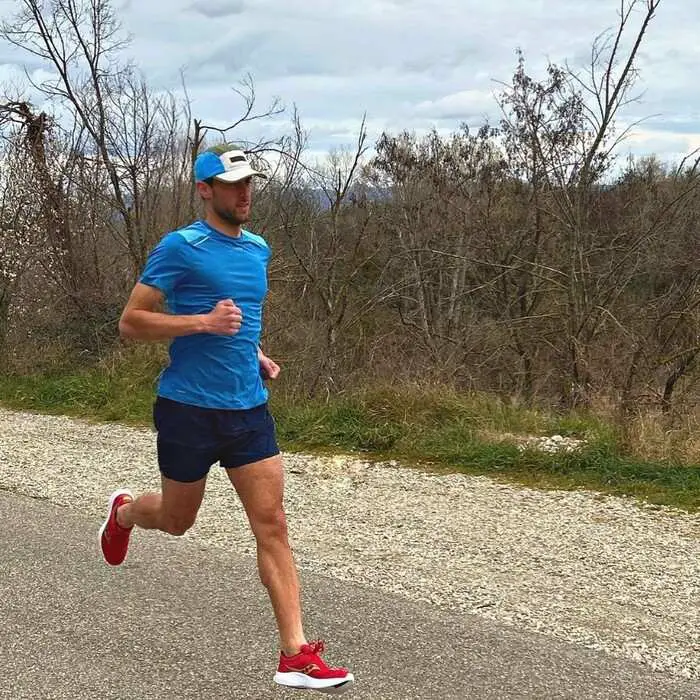
The shoe also has a flexible forefoot design for increased agility while running, but still provides plenty of support when needed.
- Material: Synthetic, rubber
- Gender: Men
- Cushioning: PWRRUN foam
- Wide Toe Box: No
- Stability: Medium
- Heel Drop: 4mm
- Color: 12 designs
- Weight: 7oz
- Size: 7-15 (wide)
- Price/Quality: Good value for money
Pros:
- Extra light upper for better breathability.
- Soft Fresh Foam cushioning, great for heavier runners.
- Wider forefoot area for better stability.
Cons:
- May be less flexible than other models.
- May be too wide for narrow feet.
7. Men’s Running Shoe Nike Pegasus 40
The Most Design Options
Nike Pegasus 39 Men's Running Shoe
The Nike Pegasus 39 has been designed to encourage a more efficient forefoot strike, which allows runners to save energy and protects them from injuries.
Comfort and Fit:
Breathability:
Material:
Flexibility:
Cushioning:
Support and Stability:
Value for Money:
Expert Score:
The Nike Pegasus 39 is one of the best running shoes with forefoot cushioning. The full-coverage outsole of this trail running shoe provides superb grip and durability, making it suitable for challenging terrain, while also being effective on pavement.
With technology that includes Zoom Air cushioning in both the heel and forefoot area, you can rest assured your feet will remain comfortable throughout long runs. The lightweight construction makes these shoes perfect for serious speedsters looking to shave off seconds from their time.
- Material: Synthetic, rubber
- Gender: Men
- Cushioning: Zoom Air
- Wide Toe Box: Yes
- Stability: Medium
- Heel Drop: 10mm
- Color: 45 designs
- Weight: 9.4oz
- Size: 5.5-18
- Price/Quality: Good value for money
Pros:
- Improved upper comfort compared to previous versions.
- Durable outsole with good traction.
- Nike Zoom Air cushioning.
Cons:
- The heel-to-toe drop may not fit all forefoot strikers.
- This model lacks a wide option.
8. Adidas Men’s Running Shoe Adistar Cs
Best for Easy Runs
Runners wearing the Adidas Adistar Cs will benefit from excellent reliability while running at any level, due to the underfoot stability and maximum comfort. Adidas Adistar Cs is great forefoot running shoes for men.
Comfort and Fit:
Breathability:
Material:
Flexibility:
Cushioning:
Support and Stability:
Value for Money:
Expert Score:
The Adidas Men’s Adistar Cs Running Shoe is one of the best forefoot cushioning running shoes for 2025. Its unique design, featuring a long curve-shaped angle across the forefoot and a highly-rockered ride in the heel and forefoot, creates a smooth transition to toe-off, providing excellent cushioning and support.
Thanks to this curved technology, along with a 6 mm heel-to-toe drop (suitable for midfoot and forefoot strikers), it helps generate an efficient rocking motion that propels runners forward as quickly as possible.
- Material: Synthetics, rubber
- Gender: Men
- Cushioning: EVA foam
- Wide Toe Box: No
- Stability: Medium
- Heel Drop: 6mm
- Color: 5 designs
- Weight: 11.2 oz
- Size: 6.5-15
- Price/Quality: Good value for money
Pros:
- Heel strike protection to ensure healthier stride.
- Stretchy and breathable upper.
- Denser foam for faster runs.
Cons:
- May be a bit heavy for long runs.
- This model lacks a wide option.
What Is Foot Strike and What Type of Shoe Should You Choose?
Foot strikes, or the way your foot lands on the ground during running, vary from runner to runner. The three primary types of strike patterns while running are heel striking, midfoot striking, and forefoot striking.
Heel strikes are when you land flat-footed right onto your heels before rolling forward onto the balls of your feet. A midfoot strike is where you make contact with all parts of your sole at the same time. And finally, in forefoot striking, you make contact mainly with the front part of your foot.
Let’s discuss the pros and cons of each type:
1. Forefoot Strike
Forefoot striking during running has become increasingly popular in recent years, as runners recognize the potential advantages it offers. When a runner uses forefoot strikes, their feet tend to land closer to the front of their heels compared to when they are heel-striking.
This reduces impact on the feet and legs due to decreased contact time with the ground and less abrupt braking force upon landing. In addition to reducing impact, forefoot strikes can potentially improve running efficiency by increasing cadence and decreasing step length/duration.
Runners may also improve their top speed more easily as a result of minimized contact with the ground due to quicker stride turnover.
Additionally, a properly executed forefoot strike technique can help reduce some common running injuries, such as shin splints and stress fractures.
Subscribe to Our Running Newsletter!
Get free running tips from renowned professional athletes and discounts from top-notch brands.
2. Midfoot Strike
This style of running allows for a smooth transition from landing to push-off, taking more stress off the calves than in heel strikes. It also distributes impact forces evenly across your feet rather than focusing them on just the heels. However, achieving midfoot strikes requires strong foot and calf muscles, which may increase muscle soreness or injury risk, so picking the best running shoe for midfoot strike is vital.
Some runners may find this style uncomfortable or difficult due to coordination challenges.
3. Heel Strike
When done improperly, heel striking can lead to higher impact forces on the body, as well as decreased efficiency when running. Heel strikers typically use a more bouncy motion with less ankle movement, but more movement through the knee and hip.
Despite this fact, research has not found any major difference in terms of speed or performance between heel strikers and non-heel strikers in large meta-studies. What’s more important is avoiding over-striding, which causes a greater braking force.
Features of Runners with Forefoot Impact
Forefoot striking occurs when a runner’s body weight is supported on the front part of their feet, as opposed to the mid or back section. This form of running allows runners to be more adaptive with their strides and have greater control over their movements.
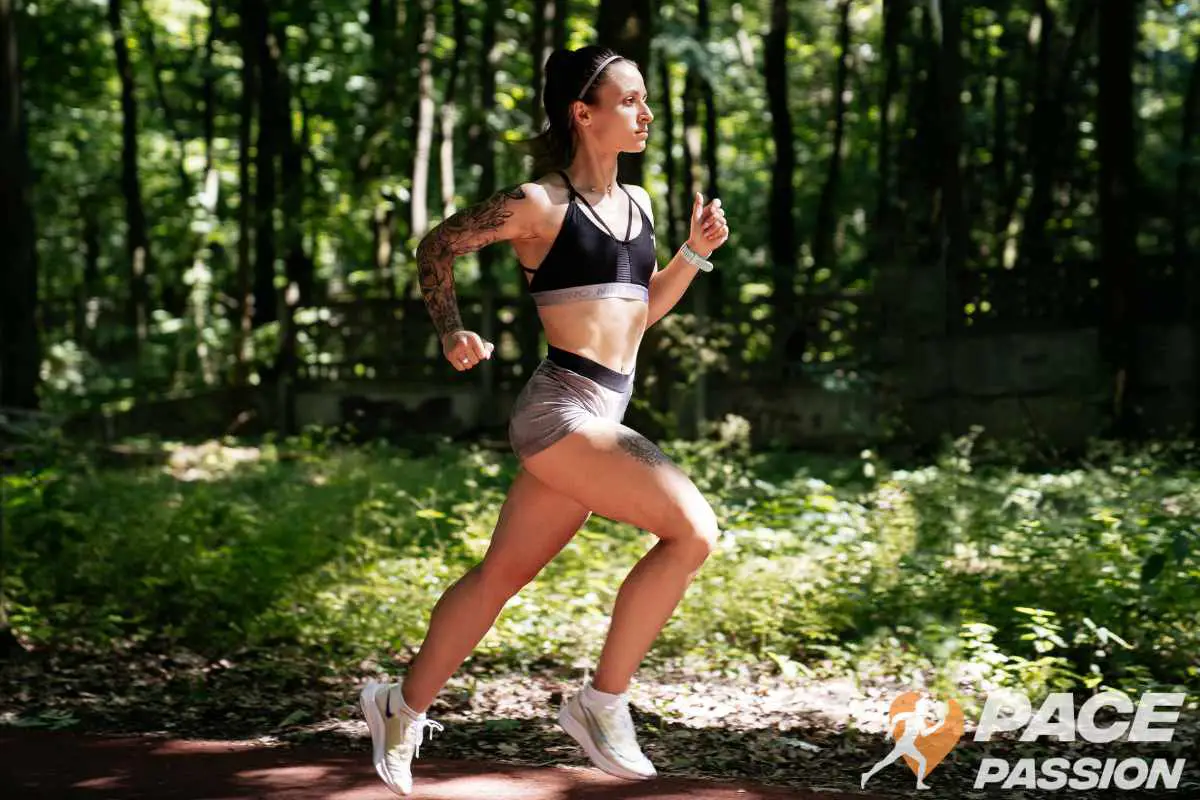
Studies show that only 5-10% of runners use this technique during regular runs, due to its higher difficulty level and unique skill needed for balance and control. This style focuses on minimizing impact, which has benefits such as improved cadence, shorter ground contact time, better knee position at heel strike, and less leg fatigue.
However, it also increases load on the Achilles tendons, leading to an increased risk of injury in some cases if not practiced correctly.
Buyer's Guide: How to Choose the Right Running Shoes for Forefoot Strikers
When selecting the best cushioned running shoes for forefoot strikers, look for features such as arch support, midsole shape, and low heel-to-toe drop.
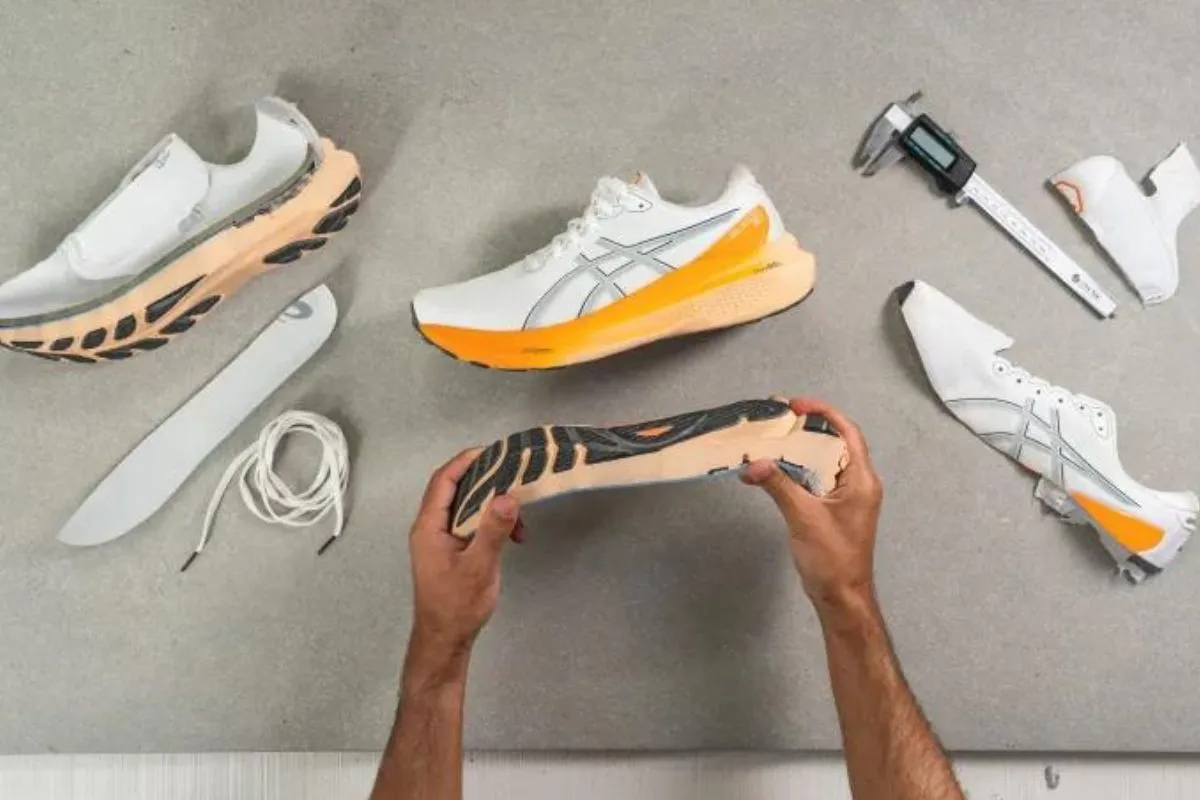
1. Arch Support
Arch support helps provide stability and prevents painful injuries such as plantar fasciitis. Forefoot strike running shoes with arch support also allows for improved foot biomechanics, helping enhance performance and reduce fatigue.
2. Heel and Forefoot Cushioning
When choosing a shoe, it is important to look for one that provides adequate heel and forefoot cushioning to absorb impact while running and help protect your feet from the shock of landing hard on the ground.
This helps reduce the risk of injuries such as shin splints or stress fractures that can be caused by repetitive overuse or impact on surfaces. The amount of cushioning needed will vary depending on your stride, but most forefoot strikers require an extra amount of padding in their midsoles.
3. Heel-to-Toe Drop
A 0-4 mm drop is usually recommended for forefoot strikers, as this provides enough cushioning at both ends while maintaining stability. While some runners prefer shoes with greater heel-to-toe drop, too much can actually have an adverse effect on your running posture and cause you to heel strike, which can damage your joints over time.
How Do You Run with a Forefoot Strike?
Here are 2 simple tips to help you change your foot strike:
1. Gradually Transition to Forefoot Striking
Transitioning from a rearfoot strike to forefoot striking requires time and practice. It’s important for runners to take their time when transitioning, as this will reduce the risk of injury or discomfort caused by incorrect form associated with an abrupt change in gait pattern.
During the transition, it may be beneficial to experiment with footwear that provides increased cushioning and stability around the metatarsal area (midsole) of your foot.

Pro Tip:
Incorporate exercises or stretching into your routine to improve calf strength and flexibility, which can help you adjust to running with more forward lean.
2. Improve Posture and Arm Swing
Forefoot-strike runners should pay particular attention to these two topics, as they help them perform better and reduce fatigue. Proper posture will ensure the arms counter torso rotation while maintaining an athletic stance at all times.
Arm swings can further increase running efficiency by synchronizing with the legs for contralateral movement, where each arm completes a backswing in time with its opposite leg's forward stride motion.
Frequently Asked Questions About Forefoot Strike Running Shoes
What Heel Drop Is Best for Forefoot Strikers?
Generally speaking, most runners who prefer forefoot strikes do best with minimal amounts of cushioning (around 4mm or less). Avoid anything greater than 8 mm, as this may place unnecessary strain on heels and ankles, while also leading to deficiencies in biomechanics over time.
Are Zero-Drop Shoes Good for Forefoot Strikers?
Zero-drop shoes are an excellent choice for forefoot strikers, providing a more natural running posture and encouraging midfoot landings. With proper arch support and cushioning, zero-drop shoes help build foot strength and stability of the ankle joint, which is beneficial for forefoot strikers.
Final Thoughts on Running Shoes for Toe Runners
Choosing the best shoes for forefoot runners can help prevent injury and promote efficiency while running. It can also help improve overall performance. As toe strikers tend to generate greater impact forces on their forefeet when compared with other footstrike patterns, having sufficient cushioning is important for protection and comfort.
Look for features such as maximal cushioning in the heel and forefoot, a low or zero-drop construction, ample arch support to prevent overpronation, and an ergonomic design fit for better stability. Our top pick, the Brooks Caldera 6, has the best features to make your forefoot running extra comfortable and safe.
Whatever your goal is, make sure you find shoes suited for your needs.
What type of foot striking do you use? Please share your tips in the comments below.
Also Read:
- How Do Runners Prevent Cramps
- Can Women Wear Men’s Running Shoes
- Does Running Tone Your Body
- Running 20 Minutes a Day
- Best Running Parachute
- Best Running Shoes For Sesamoiditis
- Best Running Shoes For Overweight Women
- How to Wash Brooks Shoes
- Best Running Shoes for Bunions
References:
- Hamill J, et al. Is changing footstrike pattern beneficial to runners? J Sport Health Sci. 2017 Jun;6(2):146-153. https://www.sciencedirect.com/science/article/pii/S2095254617300285
- Almeida MO, et al. Biomechanical Differences of Foot-Strike Patterns During Running: A Systematic Review With Meta-analysis. J Orthop Sports Phys Ther. 2015 Oct https://www.jospt.org/doi/10.2519/jospt.2015.6019
- Forefoot Running Benefits https://www.nike.com/a/forefoot-running-benefits
- Kulmala JP, et al. Forefoot strikers exhibit lower running-induced knee loading than rearfoot strikers. Med Sci Sports Exerc. 2013 Dec https://journals.lww.com/acsm-msse/Fulltext/2013/12000/Forefoot_Strikers_Exhibit_Lower_Running_Induced.12.aspx
- Science behind Brooks DNA Loft https://www.brooksrunning.com/en_us/blog/research-innovation/science-behind-brooks-dna-loft.html
- Running Shoes with Most Cushioning https://www.newbalance.co.uk/running-advice/equipment/technologies/running-shoes-with-most-cushion/
- ASICS SEW Midsole https://corp.asics.com/en/about_asics/institute_of_sport_science/technology/sew-midsole
Why Trust Us?
Pace Passion is committed to helping runners of all levels find the best product to improve their training and running performance. We use a comprehensive methodology for reviewing running and nutrition products for runners, so we only recommend products that we use ourselves or have had the opportunity to test. Read more about product testing here. Learn more about us here.
If you have any questions or suggestions, you can contact us via email – [email protected]

